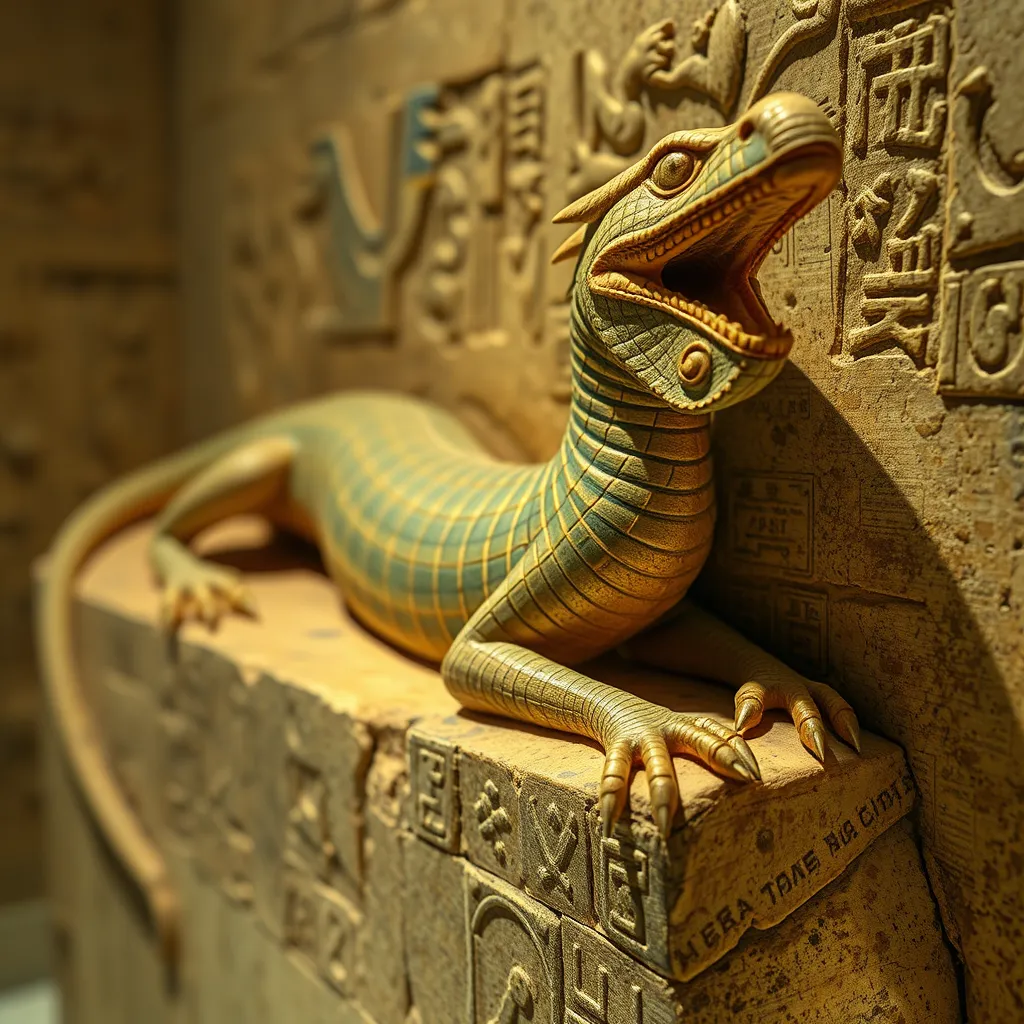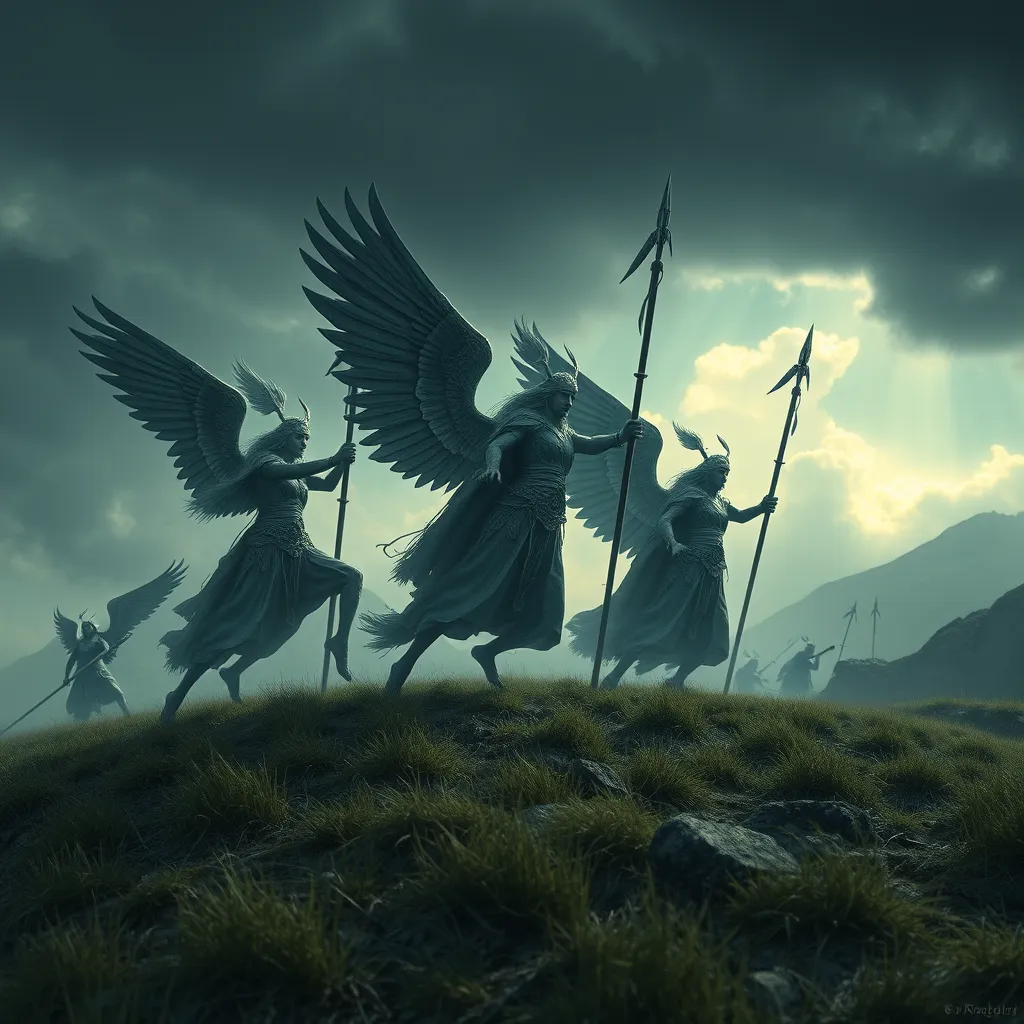The Fairy Alphabet: A Guide to Symbols, Spells and Creatures
I. Introduction to the Fairy Alphabet
The Fairy Alphabet is a mystical system of symbols and meanings that connect humans with the enchanting world of fairies. It serves as a bridge between the mundane and the magical, allowing practitioners to communicate with these otherworldly beings and harness their energies.
The origins of the Fairy Alphabet can be traced back to ancient cultures that revered nature and the spiritual world. Influences from Celtic, Norse, and various indigenous folklore have shaped its development, embedding rich symbolism and lore into the fabric of the alphabet.
This article aims to explore the intricacies of the Fairy Alphabet, delving into its symbols, spells, and the myriad creatures that inhabit fairy lore. By understanding these elements, readers can enhance their connection to the fairy realm and incorporate its magic into their lives.
II. Understanding Fairy Symbols
A. Common symbols in fairy lore
The Fairy Alphabet is filled with various symbols, each representing different aspects of fairy culture and magic. Some of the most common symbols include:
- Four-leaf clover: A symbol of luck and prosperity.
- Butterfly: Represents transformation and joy.
- Moon: Symbolizes intuition and the feminine spirit.
- Star: Signifies guidance and hope.
B. The meanings behind each symbol
Each symbol carries deep meanings and is often associated with specific emotions or energies. For instance:
- The four-leaf clover is not only a sign of luck but also a reminder to appreciate the abundance in life.
- Butterflies are seen as messengers of change, encouraging individuals to embrace new beginnings.
- The moon, with its phases, is a reminder of the cyclical nature of life and the importance of intuition.
- Stars represent aspirations and dreams, urging individuals to reach for their goals.
C. How symbols are used in spells and rituals
Fairy symbols are integral to various spells and rituals. Practitioners often draw these symbols on paper or in the air, invoking their meanings during magical workings. For example:
- Drawing a four-leaf clover while chanting a prosperity spell can enhance the spell’s effectiveness.
- Using moon symbols during rituals aimed at divination can amplify one’s intuitive abilities.
III. The Role of Spells in Fairy Practices
A. Introduction to fairy spells and their purposes
Fairy spells are crafted to invoke the assistance of fairies in achieving specific outcomes. These spells can range from simple affirmations to complex rituals, all aimed at tapping into the fairy realm’s magic.
B. Types of spells: protection, love, and prosperity
Fairy spells can be categorized into several types, each serving different purposes:
- Protection spells: Designed to shield individuals from negative energies or entities.
- Love spells: Aimed at attracting love or enhancing relationships.
- Prosperity spells: Focused on bringing abundance and financial well-being.
C. Step-by-step guide to crafting your own fairy spell
Creating a fairy spell can be a rewarding and magical experience. Here is a simple guide to help you craft your own:
- Set your intention: Clearly define what you wish to achieve.
- Gather your materials: Collect symbols, herbs, candles, or crystals that resonate with your intention.
- Choose a time: Perform the spell when the moon is waxing for growth or waning for release.
- Cast your circle: Create a sacred space where you can focus your energy.
- Invoke the fairies: Call upon the fairy beings for assistance, using your chosen symbols.
- Recite your spell: Speak your intention aloud, visualizing its manifestation.
- Close your circle: Thank the fairies and ground your energy before ending the ritual.
IV. A-Z of Fairy Creatures
A. Overview of various fairy creatures
The fairy realm is populated by a diverse array of creatures, each with its own unique traits and roles. Some of the most well-known include:
- Pixies: Mischievous and playful, often associated with nature.
- Sprites: Elemental beings linked to water, known for their grace and beauty.
- Brownies: Helpful household spirits that assist with chores.
- Elves: Wise and skilled, often connected to craftsmanship and magic.
B. Characteristics and traits of major creatures
Each fairy creature possesses distinct characteristics:
- Pixies: Small in stature, known for their bright clothing and mischievous behavior.
- Sprites: Ethereal and delicate, often depicted with wings that shimmer like water.
- Brownies: Typically depicted as small, humanoid figures that are shy but industrious.
- Elves: Tall and graceful, often portrayed as wise beings with a deep connection to nature.
C. The significance of each creature in fairy lore
Each creature plays a vital role in fairy tales and folklore:
- Pixies often embody the spirit of playfulness and mischief, reminding us not to take life too seriously.
- Sprites symbolize the beauty of nature and the importance of water in our ecosystem.
- Brownies represent the value of hard work and community support.
- Elves signify the pursuit of knowledge and the mastery of skills.
V. The Connection Between Symbols and Creatures
A. How symbols represent different creatures
In the Fairy Alphabet, symbols often represent particular creatures, linking their qualities and energies. For example, a butterfly symbol might be associated with pixies, representing their playful and transformative nature.
B. Case studies: specific symbols linked to specific creatures
Examining specific symbols can reveal deeper connections:
- The star symbol is often linked to sprites, representing their guidance and ethereal presence.
- The moon symbol can signify the elusive nature of fairies and their connection to the night.
C. The role of creatures in interpreting fairy symbols
Understanding the creatures associated with certain symbols can enhance the interpretation of the Fairy Alphabet. For instance, knowing that a certain symbol is tied to brownies can provide insight into its meaning related to work and domesticity.
VI. Cultural Variations of the Fairy Alphabet
A. Differences in fairy alphabets across cultures
The Fairy Alphabet varies widely across different cultures, each infusing its unique beliefs and symbols into the lore. For example, Celtic fairy symbols often emphasize nature, while Norse traditions may focus on the wisdom of elves and giants.
B. Examples of unique symbols and creatures from different traditions
Some fascinating examples include:
- Icelandic elves: Known for their hidden societies, they are often represented by symbols of rocks and hills.
- Japanese Yōkai: Supernatural creatures that embody nature’s spirits, represented by various symbols in folklore.
C. The influence of folklore on the evolution of the fairy alphabet
Folklore plays a crucial role in shaping the Fairy Alphabet. Stories passed down through generations have solidified the meanings and uses of symbols, continuously evolving as new tales and interpretations arise.
VII. Practical Applications of the Fairy Alphabet
A. How to incorporate fairy symbols into daily life
Incorporating fairy symbols into daily life can enhance one’s connection to nature and the mystical. Here are some ideas:




